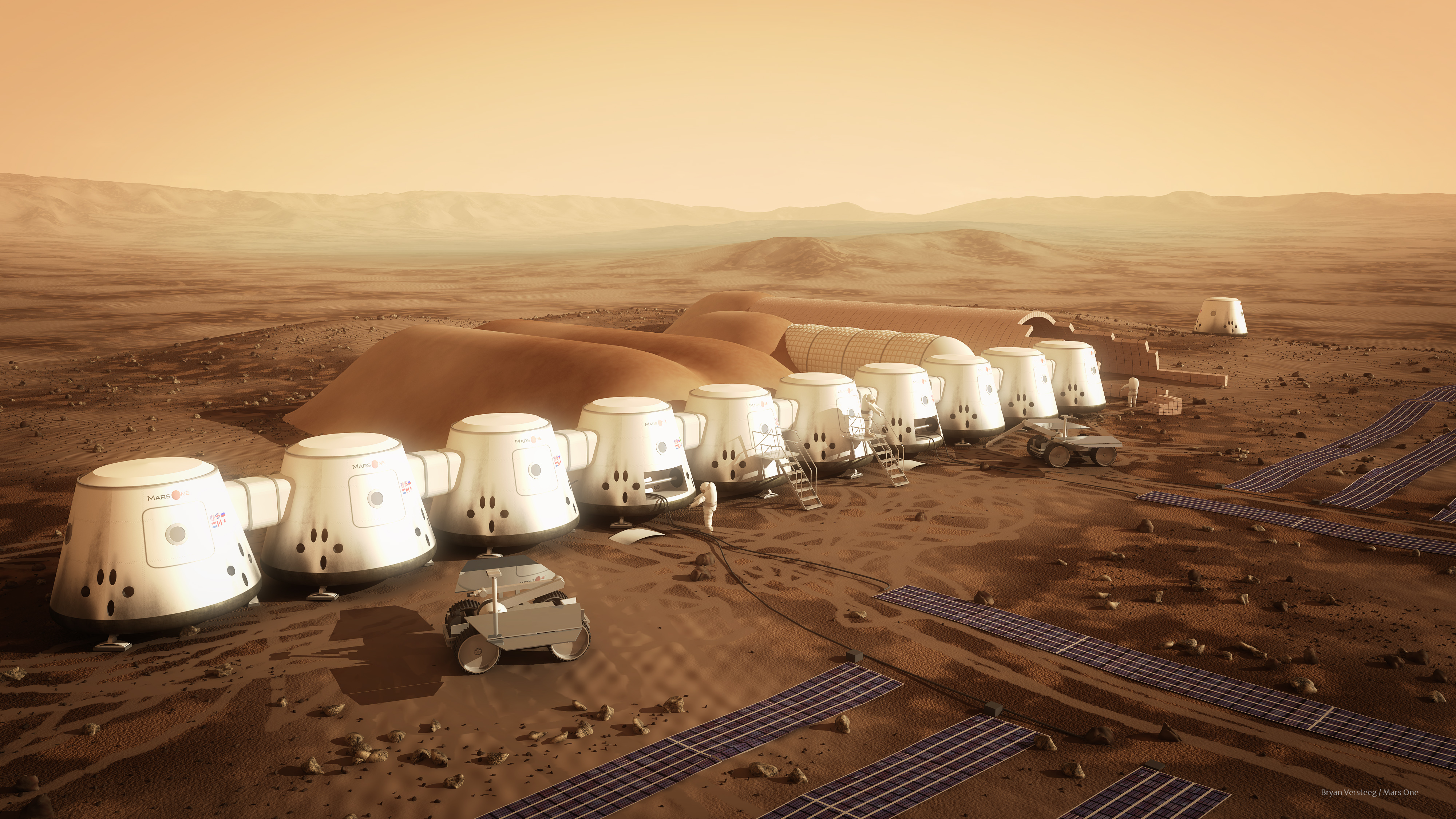Mars Colony Project Unveils 1st Private Robotic Mission to Red Planet

WASHINGTON — An ambitious project that aims to send volunteers on a one-way trip to Mars unveiled plans for the first private unmanned mission to the Red Planet today (Dec. 10), a robotic vanguard to human colonization that will launch in 2018.
The non-profit Mars One foundation has inked deals with Lockheed Martin Space Systems and Surrey Satellite Technology Ltd. (SSTL) to draw up mission concept studies for the private robotic flight to Mars. Under the plan, Lockheed Martin will build the Mars One lander, and SSTL will build a communications satellite, the companies' representatives announced at a news conference here today.
"We're very excited to have contracted Lockheed Martin and SSTL for our first mission to Mars," Mars One co-founder and CEO Bas Lansdorp said in a statement. "These will be the first private spacecraft to Mars and their successful arrival and operation will be a historic accomplishment." [Photos: How Mars One Wants to Colonize the Red Planet]
The goal of the Mars One mission is to establish a permanent settlement on Mars. The nonprofit aims to send groups of four people to the Red Planet every two years, with the first group slated to launch in 2022. Lockheed Martin and SSTL have partnered with Mars One for the initial unmanned supply mission, planned to launch in 2018 — two years later than initially planned.
Lockheed Martin designed, built and operated the lander for NASA's 2007 Phoenix Mars lander mission to look for water ice beneath the surface of the Martian arctic, and the Mars One Lander will be based on the design of Phoenix.
"It is the first privately funded planetary exploration mission. That is really, really cool," Sedivy said of the project during today's unveiling here. "This is the dawn of the new era of space exploration."
The Mars One lander will have a robotic arm capable of scooping up soil, just like the Phoenix lander; an experiment to extract water from the soil; a power experiment to demonstrate the use of thin-film solar panels on the planet's surface; and a camera for continuous video recording.
Breaking space news, the latest updates on rocket launches, skywatching events and more!

The lander will also carry aboard the winner of a worldwide university challenge that Mars One plans to launch in 2014, as well as several Science, Technology, Engineering and Mathematics (STEM) education challenge winners.
The satellite, to be built by SSTL, will be in synchronous orbit around Mars and will provide a high-bandwidth link to relay data and live video from the lander back to Earth.
"This study gives us an unprecedented opportunity to take our tried and tested approach and apply it to Mars One's imaginative and exhilarating challenge of sending humans to Mars through private investment," Sir Martin Sweeting, executive chairman of SSTL, said in a statement.

Mars One invited anyone over age 18 to apply to be an astronaut. About 165,000 people answered the first call for applications, which closed at the end of August. There will be four rounds of selection before the finalists are chosen.
Mars One estimates it will cost $6 billion to get the first four people to Mars, and $4 billion for each subsequent trip. The funding will come from sponsorships and exclusive partnerships, and the company recently announced a reality TV show to pay for the project.
"You can't go to Mars on excitement," Lansdorp said during today's press unveiling. "We are more confident than ever that we can make the first unmanned mission a reality. This is probably the most important and most difficult step of getting humans to Mars."
The foundation is also launching a crowd-funding campaign through the website Indiegogo. Contributors will earn the right to vote on several mission decisions, including the winners of STEM and university challenges, Mars One says.
"Our 2018 mission will change the way people view space exploration as they will have the opportunity to participate," Lansdorp said. "They will not only be spectators, but also participants."
You can see the Mars One Indiegogo campaign here: http://www.indiegogo.com/projects/mars-one-first-private-mars-mission-in-2018
Editor's Note: This story was updated at 5:20 p.m. ET to include additional comments from Mars One officials from today's official unveiling of the 2018 Mars One lander project.
Follow Tanya Lewis on Twitter and Google+. Follow us @Spacedotcom, Facebook and Google+. Original article on SPACE.com.
Join our Space Forums to keep talking space on the latest missions, night sky and more! And if you have a news tip, correction or comment, let us know at: community@space.com.

